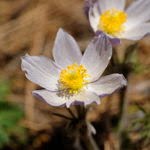What is Overtourism and What Can We Do About It?
Part IV
I concluded the last part by proposing a tentative
definition of what Overtourism is, and now I will turn to presenting a starting
point to addressing it. In this Part, and the concluding Part, I will cite some
literature, most of it accessible, but written in English. Few people write
about management of visitation and tourism in protected areas, so nearly all of
what I cite is my own work and that of close colleagues. I invite others to add
to this work in responses to these essays.
To address Overtourism, a number of things are needed. We
need a set of principles which underlie planning and management actions, and we
need a framework to help us build our situational awareness and help apply
critical thinking skills (see for example https://www.academia.edu/3612776/A_Heuristic_Framework_for_Reflecting_on_Protected_Areas_and_Their_Stewardship_in_the_21st_Century).
Of course, we will also need to reflect upon our own mental models of the situation
and recognize that we can benefit from complexity thinking (https://www.academia.edu/11847185/Benefitting_from_Complexity_thinking).
We need to plan more holistically, as Jon Kohl and I noted in the Future has Other Plans.

Today, I am going focus on
principles and frameworks, but this will be very brief. For about 30 years, I
have operating on a number of visitor management “principles” (they are
probably more like insights than princples, but principles sounds better!).
They have been derived from research and professional experience with visitor
management, and they have been written in such a way as to cross types of
protected areas, marine, terrestrial, cultural, natural, local parks as well as
World Heritage Sites. These 11 principles are stated in Table 1. I will only
discuss one of them, but you can read short summaries here (https://www.academia.edu/941160/Protected_Area_Planning_Principles_and_Strategies).
I will not say much more about these principles here, but
would like to demonstrate Principle 4, impacts are inevitable consequences of
visitor use. Research on the use/impact relationship by such scientists as
David Cole, Yu-Fai Leung and Jeff Marion (see for example, https://www.researchgate.net/profile/Jeffrey_Marion/publication/251808453_Recreation_Impacts_and_Management_in_Wilderness_A_State-of-Knowledge_Review/links/552414cc0cf2caf11bfcbf37.pdf)
shows that a little bit of initial use leads to a disproportionae amount of
impact the relationship looks like this, schematically with use level on the X
axis and impact on the Y axis
The nature of this relationship means that where we already
experience high levels of use, we will have high levels of impacts, and
reducing use (and only use) will have little impact. This is true in both the
biophysical and social domains. For example, the visitation at Yellowstone
National Park is currently over 4 million visits per year, way to the right
side of this graphic. It has a certain infrastructure that will not change even
if use drops to 2 million or less visitors. The impacts of past decisions are
here to stay, absent some major systemic level decision.
The graph also shows that focus of decisions ought to be (
and I respectfully suggest this) on the Y axis, the amount of impact that is
acceptable. Since the curve that is in the graph is an average, there is
variability around it. That variability means that factors other than use level
influence impact, things such as visitor behavior, type of use, season of use,
soils, visitor expectations and motivations and so on. For example on my recent
family visit to Yellowstone. I knew visitation would be high, so my expectation
were more in terms of family togetherness and learning, and viewing landscapes,
and lots of bison than having the park to myself.
This graph also means that spreading use more evenly,
sometimes advocated by protected area managers and academics is probably not
the best strategy for minimizing impacts.
Finally, in this brief essay, we can think where we set the
standard, at what point on the Y axis and how we make the decision and how that
decision is made. Important questions about the role of science and public
engagement.
Lets turn to frameworks for managing visitation and
providing opportunities for quality visitor experiences. There are several, including
but not limited to the Recreation Opportunity Spectrum, Limits of Acceptable
Change, Visitor Experience and Resource Protection, Tourism Optimization and
Management Model. They were mainly developed to respond to a carrying capacity
approach which has failed both in theory and practice (for a short overview,
see https://www.academia.edu/22773434/Rethinking_Carrying_Capacity).
Each of these are described here, which was originally written for American
protected area managers, so the first couple of chapters may not be that
informative for many (https://www.academia.edu/394989/An_assessment_of_frameworks_useful_for_public_land_recreation_planning).
Warning, this last document is more of a book than a short article.
Recently, the federal land management agencies in the U.S.
have put together an Interagency Visitor Use Management Process, which was the subject
of two TAPAS sponsored webinars. I think this would also be a good starting
point for discussions about what we can do about overtourism, although again,
several of the components are related only to U.S. policy and law. Read about
it here: https://visitorusemanagement.nps.gov/VUM/Framework.
An important note: the frameworks here are not answers or
solutions. What they do is help guide us through the critical thinking needed
to address the challenges of managing visitors in protected areas. They are
process oriented. Those who apply them use their own special knowledge of a
local protected area and apply that in the frameworks.





